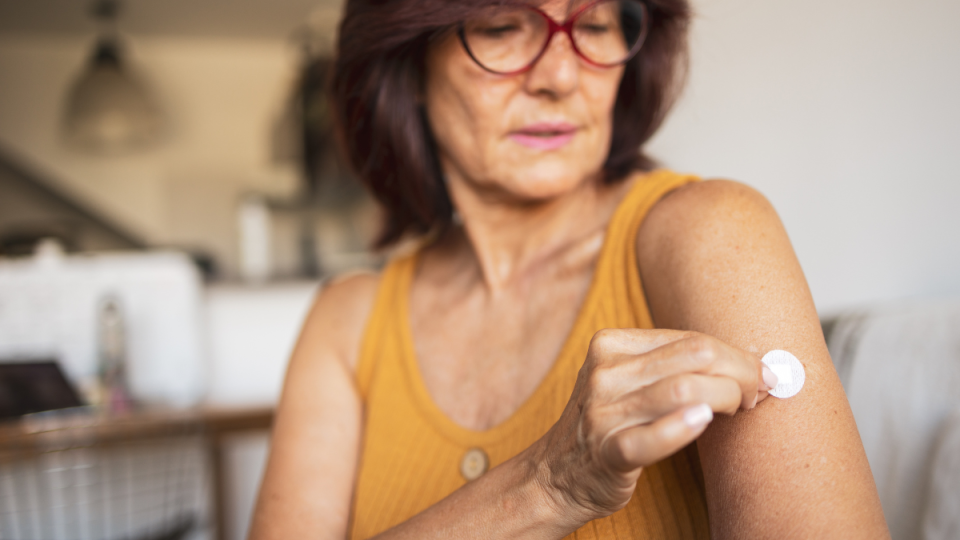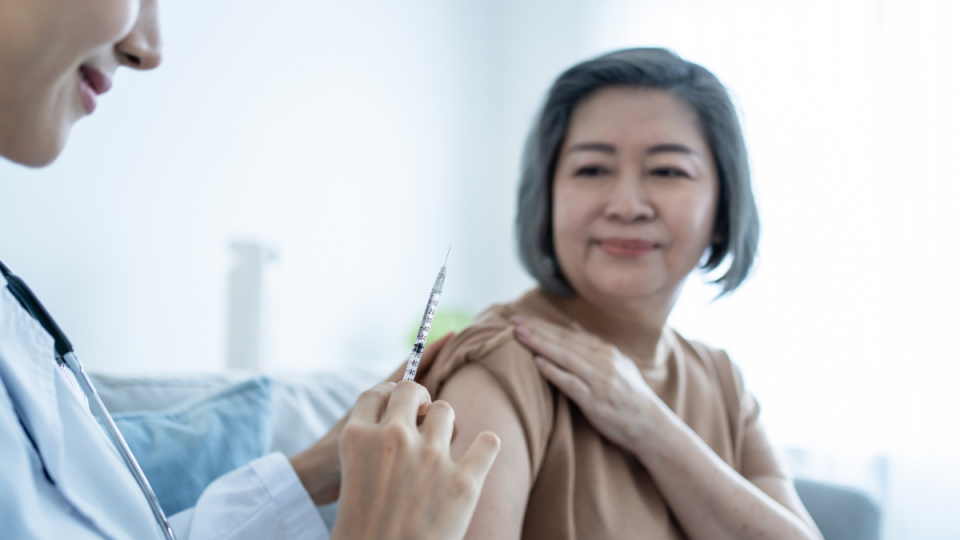Is Bioidentical Hormone Replacement Therapy Safe? All Your Questions Answered
Hot flashes, insomnia and irritability are some of the most common menopausal symptoms. Traditionally, these and other side effects were managed with hormone replacement therapy (HRT). But over the last 20 years or so, a growing number of women’s health providers have started prescribing bioidentical hormone replacement therapy instead. While these treatments are similar, there are also distinct differences. Here, we explain those differences and provide expert-approved insights if you’re considering treatment.
Bioidentical hormone replacement therapy vs. traditional HRT
Both Bioidentical hormone replacement therapy and traditional HRT are treatments for low or imbalanced hormones. They can help manage various hormone problems, but they’re most commonly used to treat perimenopause and menopause discomforts.
Traditional hormone replacement therapy often uses the drugs Premarin and Prempro, both of which are made from the urine of pregnant horses.
Bioidentical hormone replacement therapy, on the other hand, uses hormones made from plants. These bioidentical hormones are unique in that they’re “structurally identical to the estrogen produced by the ovaries in premenopausal women,” explains Angela Wilson, MD, an OB/GYN at Montefiore Medical Center in New York City.
Another difference between the two types of hormone replacement therapy is the manufacturing process. Bruce Dorr, MD, FACOG, a practicing obstetrician-gynecologist and senior medical advisor at BioTE, says traditional hormone replacement therapies are made by pharmaceutical companies and require FDA approval. The FDA has also approved some types of bioidentical hormone therapy, but not all. For instance, some bioidentical hormones are manufactured by compounding pharmacies. These hormones don’t undergo the same testing for purity, quality and potency as pharmaceutical hormones, so they can present greater risks, Dorr says.
Related: The 5 Easy Tricks Experts Say Balance Your Hormones + Tame Menopause Symptoms Naturally
Why are more women trying bioidentical hormone replacement therapy?

To understand why more women are considering BHRT, we need to go back to the late 90s, when two studies were published on the safety of hormone replacement therapy. Both studies suggested HRT increased the risk of breast cancer and heart disease, but that research has since been debunked. Nowadays, we know that HRT benefits many women, and with the original stigma gone, the tide is starting to turn.
Much of that sea change is because of the theory that "natural" hormones are "better and safer,” Dr. Wilson says. Dr. Dorr echoes this sentiment. “The idea is that you’re putting the same hormones back into your body that were naturally there, rather than animal-derived products.”
Because bioidentical hormones are molecularly identical to the hormones your body produces, the treatment is often advertised as less risky and more natural than traditional hormone replacement therapy. Although there currently isn’t enough research to confirm these claims, Dr. Dorr says many of his patients who undergo bioidentical hormone therapy experience positive results.
What are the signs you need hormone replacement therapy?
“If [menopausal symptoms] are limiting your life, you need to have a conversation with your healthcare provider,” Dr. Dorr says. “So, if you’re not walking the dog, having trouble sleeping or experiencing painful sex, it’s important to get help.”
In addition to alleviating menopause discomforts and improving your quality of life, hormone replacement therapy may reduce the risk of future health problems. A study published in the peer-reviewed medical journal, The BMJ, concluded that women who started hormone replacement therapy shortly after their first menopause symptoms were significantly less likely to develop heart disease or die prematurely. Furthermore, treatment didn’t increase the risk of cancer or stroke. Although these findings were for traditional hormone replacement therapy, since both treatments are nearly identical, experts say it’s safe to assume bioidentical hormone replacement therapy may provide similar results.
“That’s the beauty of hormones,” Dr. Dorr says. “They improve the quality of life and then, longer term, reduce your risk of diseases that can either hurt or kill you.”
Related: MDs Reveal the Best Natural Ways to Ease the Most Bothersome Menopause Symptoms
How to start bioidentical hormone replacement therapy
Make an appointment with your gynecologist if you’d like to learn more about bioidentical hormone replacement therapy. Treatment requires a prescription, so you can’t get started without one.
Dr. Wilson says an in-depth discussion of your medical history and a physical exam are the first steps to determining if you’re a good candidate. Bloodwork is also often done “to help determine the best [hormone] replacement approach, given that there may be variations depending on the stage of the menopausal transition you’re in.”
Opting to undergo bioidentical hormone replacement therapy is a big decision, so if you feel rushed, can’t ask questions or are offered only one type of therapy, consider visiting a different provider. For the best outcome, Dr. Dorr says you need to find “someone willing to spend time with you, discuss the treatment options available and provide counseling on all of this.”
How bioidentical hormone replacement therapy is administered

Bioidentical hormone replacement therapy can be administered in various ways, including:
Transdermal (skin) patches
Creams
Gels
Pills
Shots
Implantable hormone pellets
Since everyone reacts to treatment differently, you might need to try several types to determine which works best. The goal is to find the right amount of hormones that ease your symptoms, without triggering unwanted side effects.
Dr. Dorr says his philosophy is always to start low and go slow, regardless. “Each patient has different needs, so you must determine the right dosage. Some women need a level of 20 while others need a level of 60 to 70 (picograms of hormones per milliliters of blood) to relieve their symptoms. We’re all built differently.”
BHRT and HRT side effects
Bioidentical hormone replacement therapy is considered safe in most cases, but as with any prescription drug, there are potential risks. For many women, HRT side effects are most noticeable after the first few treatments and include:
Headaches
Breast tenderness
Fatigue
Bloating
Cramping
Some women also experience bleeding and spotting. If you develop these symptoms, Dr. Wilson says to consult your doctor immediately.
How long can you take bioidentical hormone replacement therapy?
Bioidentical hormone replacement therapy is very personalized, so what works for you might not work for someone else and vice versa. Since treatment risks typically increase with age, Dr. Wilson says she prefers to start bioidentical hormone replacement early in the menopause transition when symptoms are the worst.
“For many, the symptoms abate and treatment may only be necessary for a few years,” she explains. A decade or even longer of treatment might be necessary for others. Dr. Dorr says once bioidentical hormone replacement therapy ends, symptoms usually return, so it’s a matter of finding a dosage that minimizes risk while preserving the quality of life. Thankfully, with so many different applications available — pills, patches, implantable pellets, etc. — achieving this goal is possible.
Does insurance cover bioidentical hormone replacement therapy?
Insurance coverage for bioidentical hormone replacement therapy varies. Dr. Wilson says some plans only cover traditional hormone replacement therapy but not bioidentical hormone replacement therapy. Others provide some coverage but still require a pharmacy co-pay.
If you’re initially denied coverage, don’t give up. Insurance plans change annually, so Dr. Wilson recommends following up with your provider. She also says many pharmaceutical companies that manufacture bioidentical hormones offer savings programs to help cover treatment costs.
Don’t be afraid to ask your provider about BHRT
Menopause discomforts drain your energy and make you miserable, but bioidentical hormone replacement therapy can make things easier. “I want women to know they don’t need to suffer,” Dr. Wilson says.
Dr. Dorr agrees, adding, “Don’t be scared. Unfortunately, there’s a lot of negative press out there about hormone replacement therapy, but that’s improving. Our bodies are meant to have these hormones. They aren’t bad, you just have to watch the dose.”
Read on for more tips for dealing with menopause:
Study: A Cold Plunge Eases Hot Flashes, Mood Swings + More Menopause Symptoms — How to Get the Perks
The Secret Weapon for Menopause? Your Gut Health Might Surprise You — And Help You Feel Your Best
Yoga for Menopause Helps Tame Hot Flashes, Irritability, Fatigue and More, Experts Agree
This content is not a substitute for professional medical advice or diagnosis. Always consult your physician before pursuing any treatment plan.

